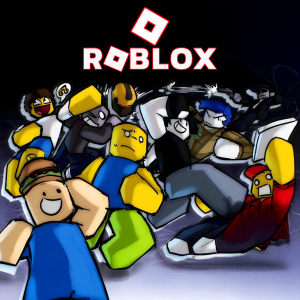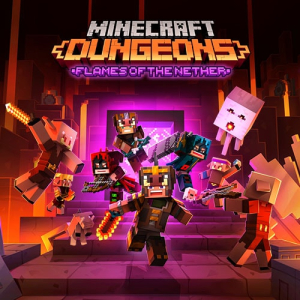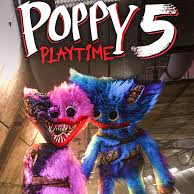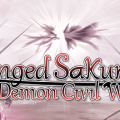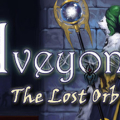Bad Parenting
I vividly remember the first time I encountered Bad Parenting 1: Mr. Red Face. I was intrigued by its notorious title, which hinted at mischief, irony, and a quirky take on a domestic management simulation. As I began playing, I quickly realized that the game was much more than a simple parody. It was an unconventional adventure that required ingenuity, adaptability, and a keen sense of humor. The narrative, mechanics, and striking visual presentation all combined to create an experience that was both frustratingly challenging and ridiculously entertaining.
A Deep Dive into the Gameplay Mechanics
The gameplay mechanics of this title immediately hooked me. The core interaction involves managing chaotic household situations with characters that each have their own distinct attitudes and behaviors. I found myself making rapid decisions, balancing limited resources, and confronting unexpected challenges that often twisted the expected outcomes. The system allowed for multiple strategies, and I appreciated that there were no clear instructions on how to succeed. Instead, trial and error became my constant companion as I experimented with different approaches to resolve domestic crises.
The game demanded quick thinking and a dash of creativity. Every session felt like navigating a maze of possibilities, and every small victory or setback taught me something new about effective management under pressure. The unpredictability embedded in the gameplay made it feel authentic and immaturely real in its chaotic representation of home life.
The Fluidity of the Storyline and Narrative Style
One of the aspects that caught me off guard was the fluid narrative style. The storyline was not linear; it shifted depending on the decisions I made while handling various family scenarios. I became deeply invested in the underlying narrative arcs that unraveled in unexpected ways. There were moments of humor juxtaposed with dark, introspective themes that made me reflect on personal responsibility and societal expectations.
I relished the way the story unfolded gradually, much like peeling the layers of an onion. One instance had me rethinking my approach entirely as the consequences of my decisions began to ripple across the gameplay. The narrative’s unpredictability was as refreshing as the gameplay itself, blurring the lines between being a mere bystander and an active participant in a dynamic tale.
Visual Aesthetics and Art Design Intricacies
The visual design of Bad Parenting 1: Mr. Red Face is as distinctive as its gameplay and narrative. The game employs a style that feels simultaneously retro and avant-garde, combining hand-drawn elements with modern animation techniques. I appreciated the deliberately exaggerated character designs and the vibrant color palettes, which added a layer of expressiveness and emotional depth to the entire experience.
What stood out to me was how the art style enhanced the satirical commentary embedded within the game. Every frame seemed meticulously crafted to convey both the chaos and the humor inherent in dysfunctional family management. From the caricatured expressions of the characters to the detailed, almost tangible environments, I found myself mentally noting every nuance that contributed to the storyline’s overall mood.
Soundscapes and Musical Interpretations
The sound design in this game is a masterclass in setting the scene. I was immediately drawn to an eclectic mix of sound effects and background scores that elevated each moment. The audio cues, whether subtle ambient noises or dramatic musical interludes, were carefully synchronized with the gameplay’s highs and lows. In certain scenarios, I found the music provided hints of an approaching challenge, allowing me a brief window of opportunity to recalibrate my strategy.
Listening to the diverse soundscapes, I realized how much thought had gone into ensuring that every auditory element served a purpose. The blend of quirky sound effects with an unconventional score echoed the game’s overall narrative of dealing with chaos amidst everyday life. For me, these audio elements were not just enhancements but integral components that helped shape the entire gaming experience.
Control Dynamics and Interface Fluidity
As someone who values intuitive controls and a user-friendly interface, I was pleasantly surprised by how well Bad Parenting 1: Mr. Red Face managed these aspects. The control scheme was both responsive and forgiving, which allowed me to navigate through challenging household scenarios without undue frustration. Each command felt fluid, and I quickly adapted to the unique system that the game required.
The layout of the interface was another highlight. Everything from resource management panels to decision trees was arranged in a manner that was both aesthetically pleasing and functionally pragmatic. The ease with which I could access different aspects of the game allowed me to focus more on the unfolding narrative and less on deciphering complex menus or ambiguous controls. In many ways, the experience felt like a well-orchestrated dance between intuition and strategy.
Emotional Rollercoaster and the Subtle Art of Satire
Throughout my time with the game, I experienced an emotional rollercoaster. There were moments when I felt genuinely elated by my smart moves as well as times when the mayhem of the simulation left me exasperated. The humor interwoven in the gameplay was a constant companion, balancing moments of tension with a tongue-in-cheek tone that prevented the experience from ever feeling too heavy.
I admired how the game used satire to comment on real-world issues linked to parenting and household management. The exaggerated scenarios often paralleled situations in daily life, forcing me to laugh at the absurdity of it all even when the consequences in the game felt weighty. This blend of comedy and chaos created layers of emotional depth that kept me thoroughly engaged from start to finish.
The Complexity of Challenges and Strategic Depth
Bad Parenting 1: Mr. Red Face is not for those who prefer a straightforward gaming session. From the outset, I realized that every incident in the game required a careful weighing of options. Each challenge was multi-dimensional, sometimes demanding more strategic thought than reflexive action. I spent many hours honing my approach to manage scenarios that seemed designed to test my limits.
This level of complexity was both intimidating and invigorating. I soon discovered that there was rarely a single correct approach; rather, success depended on crafting solutions that worked best for the situation at hand. The intricate puzzles and dilemmas made every decision feel impactful. Each choice, no matter how minor, had ripples that altered the landscape of the game, and I continuously found myself adapting to new situations that were as unpredictable as they were demanding.
The Richness of Character Development and Interactions
One of the aspects that endeared the game to me was its intricate character development. The characters in Bad Parenting 1: Mr. Red Face were showcased not merely as abstract figures but as detailed individuals, each with distinctive personalities and quirks. I became emotionally invested in their interactions and personal growth as the game evolved.
Every interaction, whether it was a tense confrontation or a humorous exchange, carried an air of authenticity. I found that the characters responded dynamically to my decisions, reflecting both the chaos and the subtle rewards of thoughtful parenting. The narrative depth in their interactions often led to unexpected alliances and rivalries that enriched the game’s world. It felt like every dialogue and every reaction was a clue to understanding the broader commentary on family dynamics and responsibility.
The Intersection of Humor and Emotional Intensity
The merging of humor with emotionally charged moments is one of the most striking features of this title. I was constantly measured between laughing at the ridiculous scenarios and feeling a sense of melancholy over the weight of the responsibilities at hand. This dynamic interplay kept me on my toes, ensuring that no two moments were ever quite the same.
The humor was intelligent and, at times, painfully resonant with real life. I admired how the game balanced satire with genuine emotional stakes. At one point, a seemingly inconsequential decision led to a cascade of events that forced me to re-evaluate my strategic planning. In another, a humorous exchange briefly lifted the burden of the challenges before plunging me headlong into another complex puzzle. This delicate balancing act between levity and tension was something that greatly enhanced my overall immersion in the game.
The Technical Performance and Seamless Functionality
From a technical perspective, I found Bad Parenting 1: Mr. Red Face to be impressively stable. The game ran smoothly even during moments of intense activity, and the transitions between different scenarios were executed with precision. I was particularly pleased with the load times and the responsiveness of the system, which contributed significantly to maintaining immersion.
The coding behind the game seemed robust, ensuring that even in the midst of multiple concurrent challenges, there were no noticeable lags or glitches. I spent a great deal of time delving into the intricacies of the gameplay without the distraction of technical hiccups, which allowed me to focus entirely on the experience. For anyone who values a well-optimized system alongside challenging gameplay, this game definitely delivered on both fronts.
The Allure of Unlockables and Hidden Features
One of the more delightful aspects of my playthrough was the discovery of various unlockables and hidden features scattered throughout the game. These elements added layers of replayability and kept me coming back for more. I was often rewarded with unexpected surprises after overcoming particularly intricate challenges or making bold decisions that deviated from the norm.
There was a sense of satisfaction in unearthing these hidden gems, as they often revealed additional narrative layers or provided enhancements to the gameplay mechanics. The designers clearly invested a great deal of thought into incorporating these elements, ensuring that there was always something new to discover no matter how many times I played. It was almost as if the game was in constant dialogue with the player, teasing more content as I progressed further into its depths.
The Dynamic Community Interaction and Social Engagement
While playing Bad Parenting 1: Mr. Red Face, I took the opportunity to explore online forums and communities where other players shared their experiences and strategies. It was invigorating to see such a vibrant community of enthusiasts discussing various interpretations of the game’s events. Their analyses and shared anecdotes provided a broader context to my own experience.
Engaging with this community enriched my understanding of the game. Various tips and hidden strategies were uncovered through dialogue with fellow players, sparking new ideas and approaches that I had not previously considered. The collaborative spirit among the players, as well as the willingness of the developers to acknowledge feedback, contributed to a lasting impression of the game as a work that thrives on collective creativity and shared enthusiasm.
The Challenge of Balancing Strategy and Spontaneity
Perhaps the most intriguing aspect of my journey was the constant need to balance carefully planned strategies with spontaneous actions. Bad Parenting 1: Mr. Red Face ensured that no solution was ever straightforward, and each decision brought with it a mix of calculated risk and impulsive creativity. I found myself oscillating between meticulously crafting long-term plans and resorting to immediate, sometimes unconventional choices.
This interplay created a gameplay environment where every session felt exhilaratingly fresh. There were moments when I was forced to abandon well-laid plans due to unforeseen developments, compelling me to improvise on the fly. This element of unpredictability not only heightened the intensity of the experience but also made every session uniquely challenging and rewarding.
The Enduring Appeal and Personal Connection to the Game
Throughout my encounter with Bad Parenting 1: Mr. Red Face, I gradually developed a personal connection to the game’s world. It was ever-evolving and deeply interwoven with the challenges and the humor that opened up as I navigated its intricacies. Each element—from the nuanced character interactions to the meticulously designed puzzles—added to an experience that felt profoundly personal.
I found that this connection was further deepened by the game’s willingness to reflect upon issues akin to real life. The satirical yet heartfelt commentary on the complexities of family life resonated with me in unexpected ways. Engaging with a narrative that oscillated between levity and gravity, I began to appreciate how such a game could encapsulate the multifaceted nature of human experiences, even if in a hyperbolic and stylized form.
- Remarkably engaging narrative and unconventional plot
- Intricately layered gameplay with strategic depth
- Vibrant visual aesthetic and distinctive hand-drawn art style
- Eclectic sound design that elevates every scenario
- Fluid controls and an intuitive interface that enhance playability
- Rich character development paired with humor and emotional depth
- A steep learning curve that may deter casual players
- Occasional confusion due to ambiguous instructions during critical moments
- Limited accessibility options that might restrict certain player experiences
